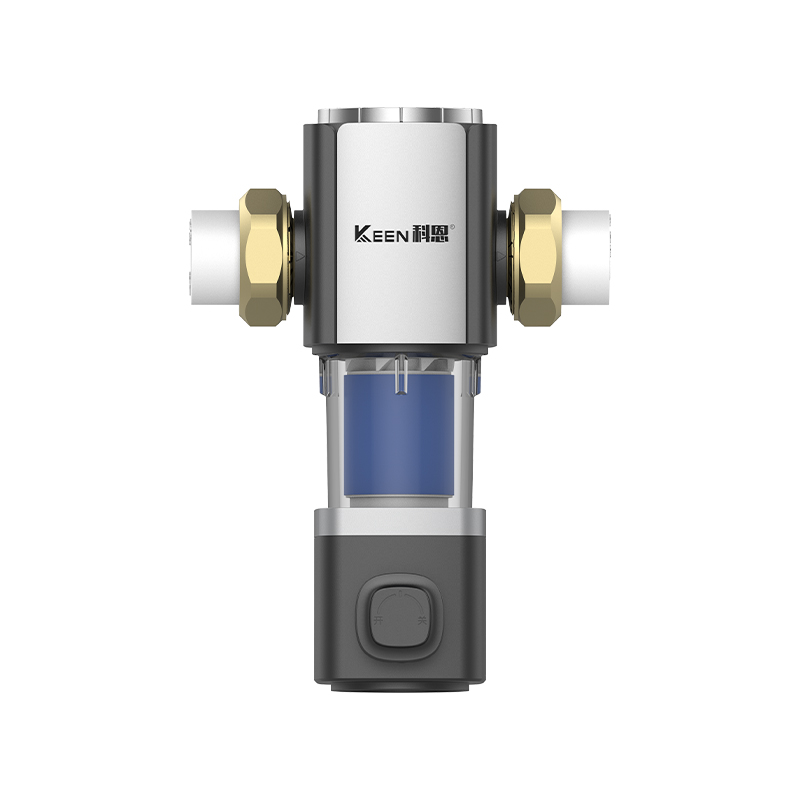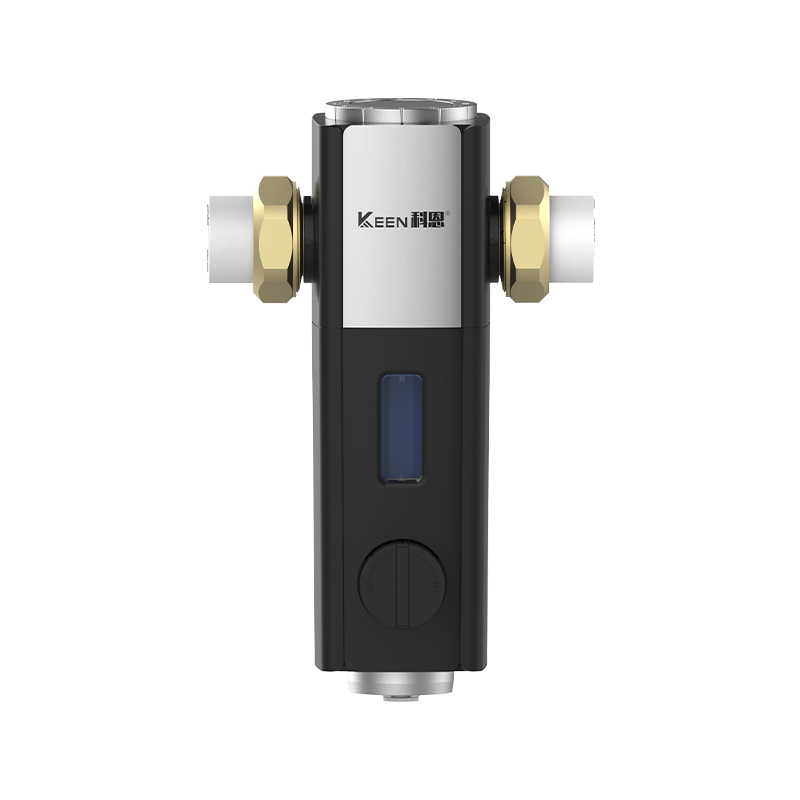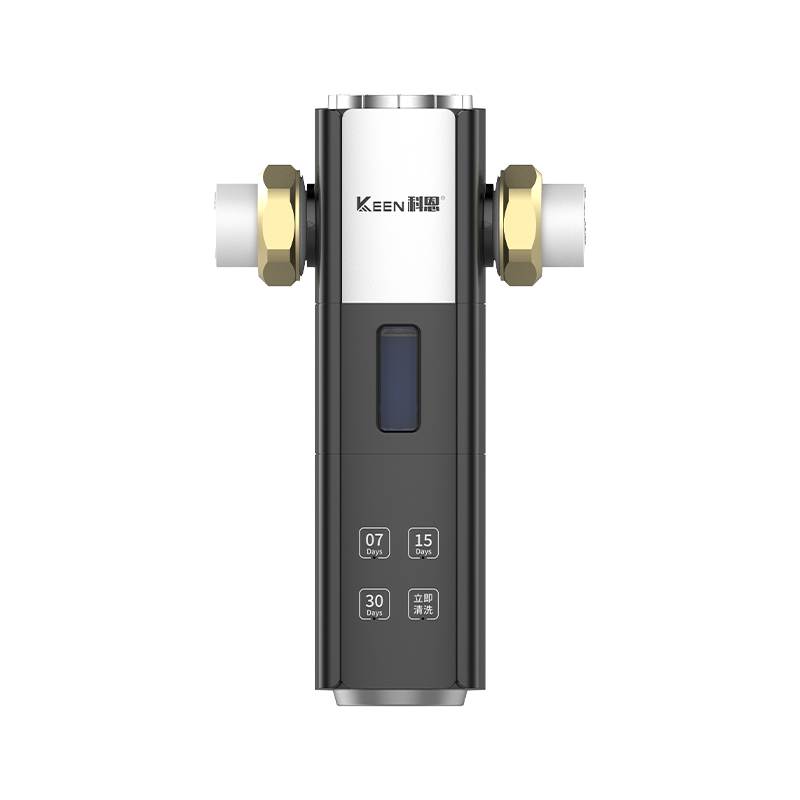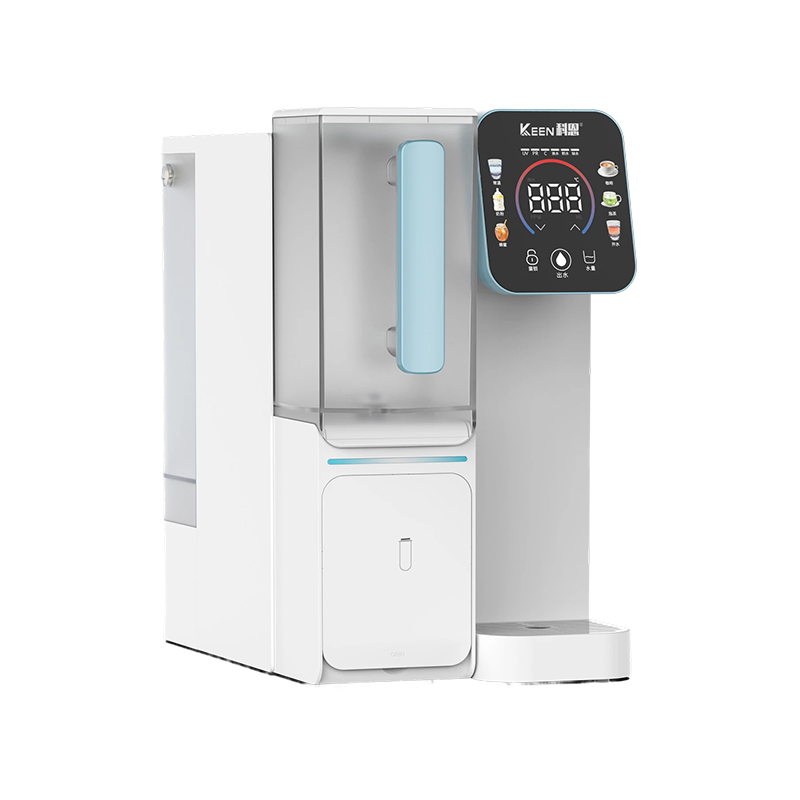How does the manual backwash function of a pre-filter household protect the safety of your entire home's water supply with simple operation?
Release Time : 2025-11-06
In modern household water systems, although tap water is treated at water treatment plants, it may still contain impurities such as rust, sediment, insect eggs, and suspended particles during transportation. While these tiny contaminants may not directly affect health, they can subtly corrode water-using appliances such as water heaters, water purifiers, washing machines, and faucet valves, shortening their lifespan and even affecting bathing comfort and the taste of drinking water. As the first line of defense for household water purification, the pre-filter household with its simple structure, intuitive maintenance, and low cost provides an efficient and reliable primary barrier for the entire house's water supply.
The pre-filter household is typically installed after the main water inlet pipe. Its core is a high-precision stainless steel filter screen (commonly with a filtration accuracy of 40–100 microns). As water flows through the filter, particles larger than the pore size are trapped, while clean water enters the subsequent pipes. Over time, impurities accumulate on the filter screen, forming a "filter cake," leading to decreased water pressure and flow. If not cleaned promptly, this not only affects the water experience but can also cause filter blockage or even damage. The manual backwashing function is the key design solution to this problem—users simply rotate or turn the flushing valve periodically to instantly change the water flow direction, using the pressure of the tap water itself to flush away the dirt adhering to the inner wall of the filter screen. The entire process requires no disassembly or power and takes only a few seconds.
This "water-washing-water" self-cleaning mechanism embodies minimalist engineering wisdom. It eliminates complex motors, controllers, or wastewater recycling systems, relying on a purely mechanical structure to achieve efficient wastewater discharge. The flushing valve is typically made of brass or food-grade plastic, which is corrosion-resistant and has a long lifespan; the drain outlet connects to a flexible hose that leads directly to the floor drain, preventing dirty water from splashing out. The operation is extremely simple, even for the elderly, truly achieving "everyone can use it, and it can be cleaned anytime." Compared to automatic flushing models, manual models are not only more affordable but also eliminate the risk of electronic component failure, demonstrating higher reliability and economy in long-term use.
More importantly, regular manual backflushing significantly extends the lifespan of the entire water purification system. After the pre-filter household intercepts most coarse particulate impurities, downstream central water purifiers, water softeners, or point-of-use RO reverse osmosis water purifiers are no longer subjected to high-load contamination, extending filter replacement cycles and significantly reducing maintenance costs. Simultaneously, scale buildup inside water heaters decreases, improving thermal efficiency; washing machine inlet valves are less prone to jamming, resulting in more stable operation; and faucet aerators are less prone to frequent clogging, ensuring smooth water flow. In short, a simple flush provides long-term protection for all water-related equipment in the house.
The role of the pre-filter household is particularly prominent in older residential areas with fluctuating water quality, rural self-built houses, or areas with frequent construction. Welding slag remaining after pipe repairs, silt in newly laid pipes, and seasonal water turbidity are often captured by the filter within hours, preventing impurities from entering the household network and causing secondary pollution. The immediacy of manual backflushing allows users to address abnormal water pressure or deteriorating water quality immediately, without waiting for professional assistance, giving them control over their water safety.
Of course, for optimal results, users should develop a habit of regular backflushing—generally recommended every 1-3 months. If water quality deteriorates significantly (e.g., after a water outage), backflushing should be performed immediately. Some products feature a viewing window on the transparent drain chamber or pressure gauge, facilitating assessment of the degree of blockage and improving targeted maintenance.
Ultimately, the manual backflushing function of a pre-filter household represents a "low-tech, high-value" approach to life. It doesn't rely on intelligent algorithms, but solves the most common water-related problems in the simplest physical way. In an era that pursues high-tech water purification, this return to basics—reliability and autonomy—becomes a solid starting point for safe water use for countless households. When the water flow is clear and unobstructed again, those few seconds of manual operation are the gentlest protection for family health and the lifespan of the equipment.
The pre-filter household is typically installed after the main water inlet pipe. Its core is a high-precision stainless steel filter screen (commonly with a filtration accuracy of 40–100 microns). As water flows through the filter, particles larger than the pore size are trapped, while clean water enters the subsequent pipes. Over time, impurities accumulate on the filter screen, forming a "filter cake," leading to decreased water pressure and flow. If not cleaned promptly, this not only affects the water experience but can also cause filter blockage or even damage. The manual backwashing function is the key design solution to this problem—users simply rotate or turn the flushing valve periodically to instantly change the water flow direction, using the pressure of the tap water itself to flush away the dirt adhering to the inner wall of the filter screen. The entire process requires no disassembly or power and takes only a few seconds.
This "water-washing-water" self-cleaning mechanism embodies minimalist engineering wisdom. It eliminates complex motors, controllers, or wastewater recycling systems, relying on a purely mechanical structure to achieve efficient wastewater discharge. The flushing valve is typically made of brass or food-grade plastic, which is corrosion-resistant and has a long lifespan; the drain outlet connects to a flexible hose that leads directly to the floor drain, preventing dirty water from splashing out. The operation is extremely simple, even for the elderly, truly achieving "everyone can use it, and it can be cleaned anytime." Compared to automatic flushing models, manual models are not only more affordable but also eliminate the risk of electronic component failure, demonstrating higher reliability and economy in long-term use.
More importantly, regular manual backflushing significantly extends the lifespan of the entire water purification system. After the pre-filter household intercepts most coarse particulate impurities, downstream central water purifiers, water softeners, or point-of-use RO reverse osmosis water purifiers are no longer subjected to high-load contamination, extending filter replacement cycles and significantly reducing maintenance costs. Simultaneously, scale buildup inside water heaters decreases, improving thermal efficiency; washing machine inlet valves are less prone to jamming, resulting in more stable operation; and faucet aerators are less prone to frequent clogging, ensuring smooth water flow. In short, a simple flush provides long-term protection for all water-related equipment in the house.
The role of the pre-filter household is particularly prominent in older residential areas with fluctuating water quality, rural self-built houses, or areas with frequent construction. Welding slag remaining after pipe repairs, silt in newly laid pipes, and seasonal water turbidity are often captured by the filter within hours, preventing impurities from entering the household network and causing secondary pollution. The immediacy of manual backflushing allows users to address abnormal water pressure or deteriorating water quality immediately, without waiting for professional assistance, giving them control over their water safety.
Of course, for optimal results, users should develop a habit of regular backflushing—generally recommended every 1-3 months. If water quality deteriorates significantly (e.g., after a water outage), backflushing should be performed immediately. Some products feature a viewing window on the transparent drain chamber or pressure gauge, facilitating assessment of the degree of blockage and improving targeted maintenance.
Ultimately, the manual backflushing function of a pre-filter household represents a "low-tech, high-value" approach to life. It doesn't rely on intelligent algorithms, but solves the most common water-related problems in the simplest physical way. In an era that pursues high-tech water purification, this return to basics—reliability and autonomy—becomes a solid starting point for safe water use for countless households. When the water flow is clear and unobstructed again, those few seconds of manual operation are the gentlest protection for family health and the lifespan of the equipment.







